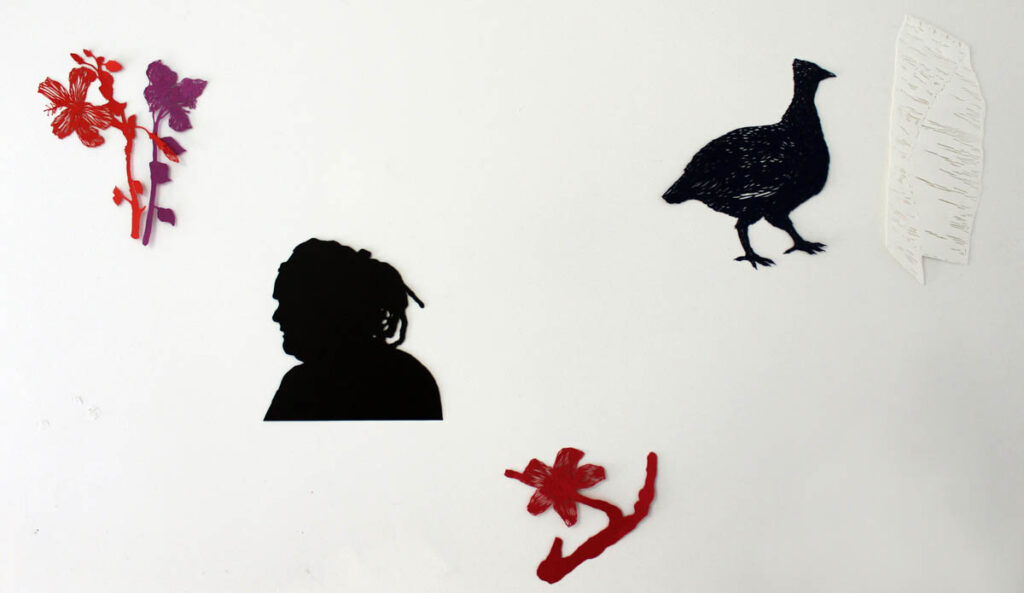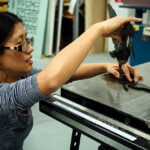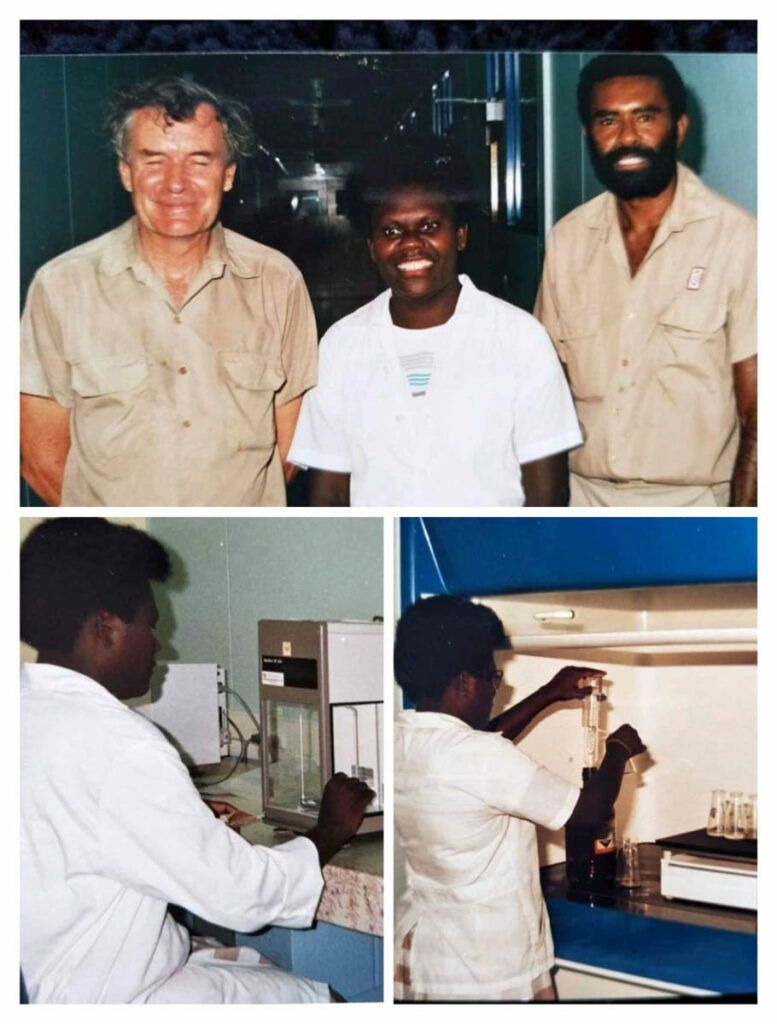 Pamela See creates a papercut installation in honour of a woman who has helped acknowledge the diverse communities of Logan City.
Pamela See creates a papercut installation in honour of a woman who has helped acknowledge the diverse communities of Logan City.
Since the first International Women’s Day in 1911, the annual event has evolved from advocating for better salaries, safer workplaces and shorter working hours. The calendar observance marks the anniversary of a march. On 8 March 1908, 15,000 women united on the Lower East Side of New York. Contemporary celebrations draw attention to a diversity of ways people who identify with the gender continue to face inequity and discrimination.
This year’s theme is “Inspire Inclusion”. Accordingly, I would like to acknowledge a former member of the Garland Magazine editorial board: Sana Reana Tangere Sahutsi. Also known as Sana Balai, the respected elder from Buka Island has championed inclusivity for the past two decades. Through her work with linguistically diverse communities, the Australian cultural landscape has been indelibly altered.
She was appointed the inaugural curator of the Living Museum of Logan (LMOL) in 2021. Under her guidance, a safe space for intercultural dialogue through creative practice was established. Craft took pride of place. In 2018, Sana’s capacity to convey issues critical to the communities she engages was demonstrated through her co-curatorship of Women’s Wealth, as part of the 9th Asia Pacific Triennial at the Queensland Art Gallery and Gallery of Modern Art. In 2009, she also co-curated Wisdom of the Mountain: Art of the Ömie at the National Gallery of Victoria (NGV).
My portrait employs emblematic flora and fauna as geographic markers. A branch of hibiscus flowers symbolises the Solomon Islands, with which she culturally identifies. Bougainvillea flowers refer to Bougainville, the autonomous region of Papua New Guinea where she was born and raised. Within the matriarchal Nakaripa Clan, symbolised by a wild fowl, Sana is second-in-line for Patu. The leadership role is presently occupied by her elder sister. This royal lineage is represented in the composition by a depiction of their Tuhu. The hood was woven from pandanus and bears Sana’s maternal family markings. The final flower, from a red silk cotton tree, references her Chinese heritage.
Her paternal great-grandfather was born in Guangdong Province. He was part of a maligned Hakka minority, which has settled across South-East Asia. His grandson married Sana’s mother, a union that produced her and nine siblings. This was Sana’s father’s second marriage because his first was subjected to laws forbidding interracial marriages. Despite his ancestry, he was prosecuted for taking a Chinese wife. Divorce was presented as an alternative to incarceration. As a consequence, Sana also has a half-sister and a half-brother.
A generation later, Sana recalls experiencing violence provoked by similar prejudices during the Bougainville Crisis. She and her husband met whilst working for Bougainville Copper Limited, a subsidiary of Rio Tinto. Sana was an environmental research analyst at the time. They were set upon by a band of twelve insurgents. Sana was struck in the face with the butt of a M16 rifle for betraying her own people through an interracial relationship. The couple relocated to Melbourne in 1990.
- (L-R): Fred Grieshaber (Chemist), Sana Balai and Kems Keakop (both Environmental Research Analysts)
- Sana Balai with Louis Lim, one of the exhibitors at the LMOL
In 1997, Sana began her career in the museums and galleries sector as a Relocation Officer of Melbourne Museum. She progressed into the role of Assistant Collections Manager in their Indigenous Cultures department. She also worked in the NGV, as the Assistant Curator of Indigenous Art, between 2004 and 2013.
The Logan City Council has a longstanding commitment towards conserving its European heritage. Amongst the precincts dedicated to promoting this culturally specific history of settlement are Mayes Cottage Museum, Beenleigh Historical Village and Museum, and the Logan City Historical Museum. However, Logan City is also recognised by the Refugee Council of Australia as a Refugee Welcome Zone. Over 27 per cent of the residents were born overseas and more than 18 per cent speak a language other than English at home.
Sana developed a model for LMOL that addresses the apprehensions held by First Nations people and migrants from other colonised countries. These communities have historically been pillaged to provide content for ethnographic museums. It was with an enormous heart that she won the trust of linguistically diverse residents. Her relatability might also reflect the rich fusion of bloodlines she genetically represents. Her survival of a civil war may account for her capacity to comfort some of the most vulnerable new arrivals to this country.
I moved to Logan City at the age of nine years. My gratitude to her for instating the historical presence of my community through museum displays cannot be conveyed through words. Subsequently, I have created this artwork in her honour. Sana completed her tenure at LMOL in January 2024. In April, she will begin a fellowship at the University of Queensland. Documenting her Chinese heritage is among her research priorities.
Further Reading
City of Logan. (n.d.). About Logan City.
International Women’s Day. (n.d). History of International Women’s Day.
International Women’s Day. (n.d.). International Women’s Day 2024 Campaign Theme is ‘Inspire Inclusion’. https://www.internationalwomensday.com/Theme
McDougall, R. (2019, June 22). Women’s Wealth: A Shared Dream. QAGOMA Blog.
Nguyen-Hunt, E. (2023, November 22.). Honour the Elders and Create for the Future: Aunty Sana Balai’s Advice for the Next Generation. ABC Pacific.
QAGOMA. (2019, June 4). APT9/ Women’s Wealth with Sana Balai [Video]. YouTube.
The Age. (2006, February 22). My Island Home.





